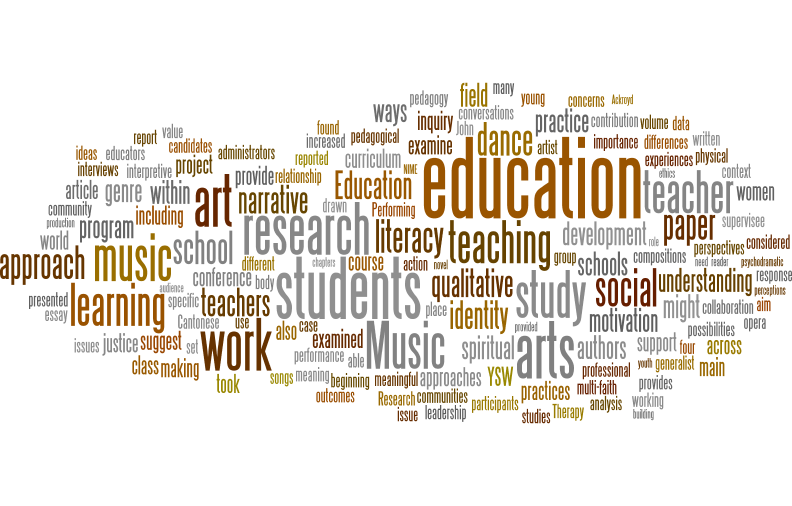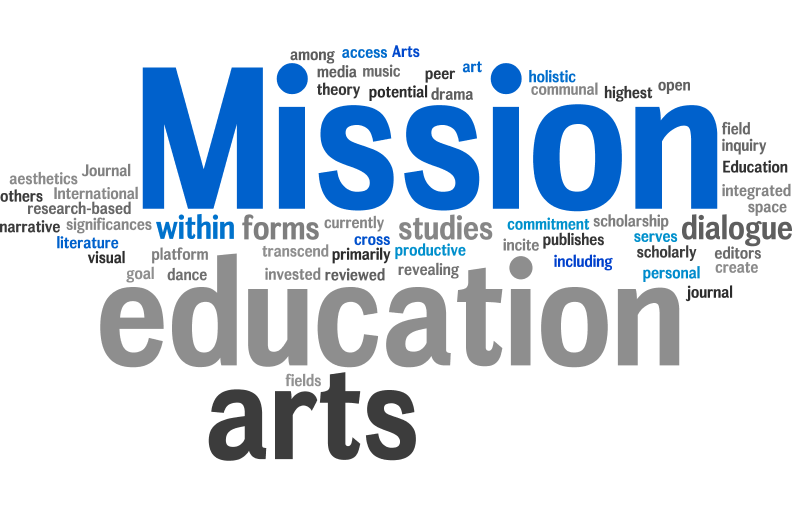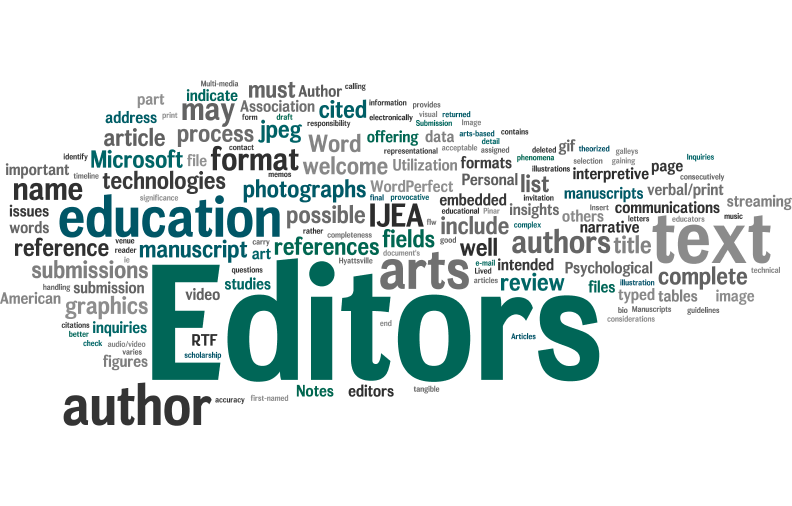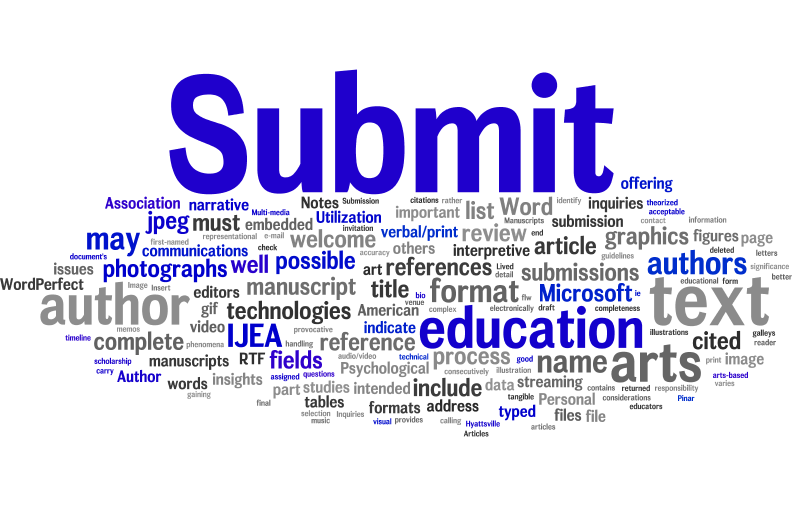2010 Volume 11
Articles and Abstracts

Articles
Volume 11 Number 1: Carter, P. D. Using action methods in post-graduate supervision.
The use of psychodramatic action methods in academic supervision is examined through the detailed description of a session between a supervisor and a supervisee working on a PhD in the field of Information Systems. The psychodramatic emphasis on spontaneity, reciprocity, and the use of dramatic production have various advantages for post-graduate supervision, namely: the involvement of affect, action and cognition in meaning making; the generation of self-authority in the supervisee; and the building of a cooperative working relationship between supervisor and supervisee. Action methods do not need to be seen as the sole domain of the action method expert. Supervisors will be able to take up individual techniques and approaches outlined here and integrate them into their own practice.
Volume 11 Number 2: Weinstein, S. "A unified poet alliance": The personal and social outcomes of youth spoken word poetry programming.
This article places youth spoken word (YSW) poetry programming within the larger framework of arts education. Drawing primarily on transcripts of interviews with teen poets and adult teaching artists and program administrators, the article identifies specific benefits that participants ascribe to youth spoken word, including the development of literate identities, therapeutic experiences, overcoming of shyness, and increased self-confidence and self-esteem. The author describes the writing workshop format common to many YSW programs and analyzes the specific contribution of performance to the benefits that participants identify from YSW. This article draws on James Gee's (1991) concept of discourses to explain the strong identification that many YSW poets feel toward their chosen genre.
Volume 11 Number 3: Morawski, C. M. Transacting the arts of adolescent novel study: Teacher candidates embody Charlotte Doyle.
To help underscore the importance of giving the arts an integral place in the literacy continuum of secondary school language arts, I immersed myself in a careful reading of twenty teacher candidates' transactions in the art of body biography for novel study for intermediate students (grades 7-10). Coming together in groups of five, the teacher candidates used life-size body outlines drawn on oversized paper, along with a myriad of found and stocked materials, such as fabric, pens, and paint, to experience and express the transformation of the main character in the young adult novel, True Confessions of Charlotte Doyle. Informed by their transactions in the body biography compositions, the teacher candidates reported that they were able to reach a more holistic portrait of Charlotte, while enriching their own instructional repertoires.
Volume 11 Number 4: Maniaci, K. & Chandler-Ott, K. "Still building that idea": Preservice art educators' perspectives on integrating literacy across the curriculum.
Conducted collaboratively by an art educator and a literacy educator, this qualitative study focused on pre-service art educators' perspectives on integrating literacy in their teaching of art as they took a required course on literacy across the curriculum. Data included interviews, questionnaires, course assignments, and field notes from class sessions. Our analysis identified three patterns related to participants' perspectives while taking the course: their conceptions of literacy expanded, they reconceptualized familiar art education practices with a literacy-focused lens, and they considered new practices. Findings suggest that literacy courses are valuable for art educators but that they must be designed to maximize disciplinespecific concerns and literacies. Implications for further research and practice are outlined.
Volume 11 Number 5: Leung, B. W. & Leung, E. C. K. Teacher-artist partnership in teaching Cantonese opera in Hong Kong schools.
This study aims to examine how and why students transform in terms of learning motivation in learning the Cantonese opera with a teacher-artist partnership approach in Hong Kong schools. An artist and seven teachers from four schools collaborated to teach the genre for eight weeks. Students' learning motivation changes in Cantonese opera was measured by a set of pre- and post-learning questionnaires. Qualitative data were drawn from class observations and focus group interviews with teachers and students. Results indicate that students' motivation in learning the genre has been changed. The statistical analysis suggests that, while primary students had significantly increased their motivation in learning Cantonese opera, the secondary students' motivation had not increased. Attributions include age differences, self-consciousness, intrinsic value and socio-cultural impact. However, the partnership was found to be an appropriate and effective approach in teaching the ethnic genre for its "role supplementation" between the teacher and the artist.
Volume 11 Number 6: Risner, D., & Stinson, S. W. Moving social justice: Challenges, fears and possibilities in dance education.
This essay explores social justice commitments in dance pedagogy and dance education teacher preparation in the USA as developed through a series of conversations between two dance educators and former administrators in higher education. The authors examine the history of multiculturalism, multicultural practices in postsecondary dance, their influences on dance teacher education, and the limitations of the multiculturalism movement that emerge from misperceptions about, or disregard for differences in culture, gender, ability, ethnicity, and socioeconomic background. Dominant arguments for maintaining status quo perspectives such as scarcity of resources, accreditation standards, and tenured faculty compositions are examined in conversation with a number of prophetic voices for social justice teaching and learning. Examples of pedagogical approaches and project assignments that aim to bring social justice learning to the dance education classroom in concrete ways are presented.
Volume 11 Number 7: Atkinson, B., & Mitchell, R. "Why didn't they get it?" "Did they have to get it?": What reader response theory has to offer narrative research and pedagogy.
In this paper we suggest that narrative representations that seemingly fail to reach an audience as intended may engage the audience in more meaningful ways. We use reader response theory to explore how an audience's responses to a conference narrative presentation made available a multiplicity of interpretive frameworks and narratives to the readers/listeners. We assert that when various interpretive frameworks are made visible across the context of a narrative text by the readers' or listeners' responses to it, they can be examined for how they collude, collide, exclude, and compete for meaning. At the same time, conversations evoked by narrative texts and through other arts can generate greater understanding across and through cultural differences. This offers dynamic pedagogical possibilities through appealing to our horticultural approach of seeking out knowledge gained from conversations across divergent interpretive communities. Our point here is that the intentional creation of instances where students are challenged to recognize the taken for granted notions that ground their worldviews through the arts in education and education in the arts affords indispensable opportunities to engage students in a richer type of teaching and learning.
Volume 11 Number 8: Garvis, S. & Pendergast, D. Supporting novice teachers of the arts.
This paper examines and reports on beginning generalist teacher self-efficacy, which Bandura (1997) suggests plays an important part in student outcomes. In 2008, 201 beginning generalist teachers throughout the state of Queensland, Australia, participated in a study that aimed to provide a snapshot of current perceptions towards support in schools for the arts. Beginning teachers were asked to rank their school support for a number of different subjects in the school curriculum and provide written justification for these rankings. Results suggest that beginning teachers perceived a general lack of support for the teaching of the arts in their classroom, compared to English and maths. They reported that schools provided greater financial support, assistance and professional development for the teaching of literacy and numeracy with a view to increase school performance in national testing. Findings provide key insights for school administrators and policy makers for the adequate delivery of arts education in Queensland schools, particularly when this task falls to generalist teachers with little or no subject expertise in the arts.
Volume 11 Number 9: Greher, G. R., Hillier, A., Dougherty, M., & Poto, N. SoundScape: An interdisciplinary music intervention for adolescents and young adults on the Autism Spectrum.
Service provision for adolescents and young adults with autism spectrum disorders (ASD) is lacking, particularly post high school. We report on a music intervention program, outline our program model, and report some initial pilot data evaluating the program outcomes. We also discuss implications for undergraduate and graduate students who were involved in the project. Overall, outcomes were positive and highlighted the need for such interventions among the ASD community. We hope our observations focused on the strengths and weaknesses of the program will be helpful to others who may be considering implementing a similar intervention.
Volume 11 Number 10: Tuisku, H. Diving in: Adolescents' experiences of physical work in the context of theatre education.
This study deals with adolescents' experiences and perceptions of physical actor training practice in the context of theatre education. The study took place in Kallio Upper Secondary School of Performing Arts in Helsinki, Finland, where I work as a drama teacher. As a researcher, I carried out an authorized inquiry with two groups of 16-year old students who took part in acting classes as an optional subject in their curriculum. This qualitative phenomenological research followed the basic principles of an embodied narrative inquiry, presented by Liora Bresler (2006). Regarding the developmental process the psychodynamic approach is being used along with the phenomenological. Overall the students' response was positive: they found it easier to dive in when there was an emphasis on the physical in the course work. Also the fact that the work was collective was considered helpful. Physical work seems to provide possibilities for an adolescent to take steps in personal growth. We can call these break-through experiences. However, when the work is both physical and collective it can also create unnecessary emotional distress. Therefore, special attention should be paid to dialogical encounter in pedagogical situations.
Portrayals of Curriculum as Aesthetic Text & Lived Aesthetic Inquiry
Volume 11 Portrayal 1: Bickel, B. Living the divine spiritually and politically: Art, ritual and performative pedagogy in women's multi-faith leadership.
A/r/tography and mindful inquiry were engaged as primary approaches to assist self and group reflection within a group of fourteen women committed to multi-faith education and leadership in their communities. In a world of increasing religious/political tensions and conflicts this study asks, what is the transformative significance of an arts and ritual-based approach to developing and encouraging women's spiritual and multi-faith leadership? To counter destructive worldviews and practices that have divided people historically, politically, personally and sacredly, the study reinforces the political and spiritual value of women spiritual and multi-faith leaders creating and holding sacred space for truth making and world making. This study led to a renewal of compassionate leadership within many of the women. This study posits that engaging performative pedagogy within a sacred and creative ritual sanctuary, can assist women to lead integrated spiritual and political lives, while building communities that are respectful, embracing of diversity and capable of learning through diversity.
Volume 11 Portrayal 2: Hickman, R. Self portrait - An account of the artist as educator.
This paper is concerned primarily with the issue of the relationship between personal and professional identity with reference to the role of artist and that of teacher. In particular, the development of artistic identity and how it might inform professional identity and pedagogy is examined. This issue is considered through a self-portrait - an autobiographical, largely episodic, account of the author's formative years. Some consideration is given to exploring the value of selfportraiture (and similar approaches) as a method for eliciting data about identity, including social identity. An area identified as an issue for future research in education was the relationship between social class, art, and identity.
Volume 11 Portrayal 3: Baxter, M. Voices of resistance, voices of transcendence: Musicians as models of the poetic - political imagination.
How might songs, like John Lennon's Imagine or Bob Dylan's Blowin' in the wind, offer ways to explore alternative ways of being in the world, to challenge the status quo? How might these songs become springboards for original pieces that capture students? ideas about world issues? In this article, I observe what happens when selected strategies from an on-going curricular writing project utilizing a social justice framework are presented to a class of New York City fifth graders. I draw from student-created songs, instrumental compositions, written and video-taped narratives to document ways in which these elementary school students embrace ideals of social responsibility through music-making.
Interludes
Volume 11 Interlude 1: Richmond, S. Understanding works of art, the inexpressible, and teaching: A philosophical sketch.
Book Reviews
Volume 11 Review 1: Blair, D. V. Narrative inquiry in music education: Troubling certainty: A review essay.
Book Reviewed: Barrett, M., & Stauffer, S. (Eds.). (2008). Narrative inquiry in music education: Troubling certainty. Dordrecht, The Netherlands. Springer. ISBN: 978-1402098611.
The research in this volume is drawn from the first Narrative in Music Education (NIME) conference that took place in 2005. This visionary conference offered a generous space for dialogue about music education practice and research as narrative inquiry. Leading qualitative research scholars provided keynote presentations, including Wayne Bowman and Jean Clandinin who also contributed concluding chapters in this text. Margaret Barrett and Sandra Stauffer, organizers of the NIME conference, edit this book.
Volume 11 Review 2: Laor, L. "On the seashore of endless worlds, children play" Dillon's Music, meaning and transformation: A review essay.
Book Reviewed: Dillon, S. C. (2007). Music, meaning and transformation. Newcastle: Cambridge Scholars Press. ISBN: 978-1847182135.
In this review essay, I shall follow Steve Dillon's journey in his quest to "examine what interests and motivates children about music and what they find meaningful." (p.2). In his introduction to his Music, Meaning and Transformation (2007, Cambridge Scholars Publishing), Dillon mentions its main objectives. He attempts to examine "how curriculum and experience might be designed so that it provides access to meaningful music making". In addition he aims to define the "dimensions of good practice" and their relation to the meaning of music to young people and to music teaching.
Volume 11 Review 3: Davidson, J. Twisting, turning, folding, and recreating the notion of collaboration in qualitative research ... through an artistic lens.
Book Reviewed: Gershon, W. S. (2009). The collaborative turn: Working together in qualitative research. Rotterdam: Sense Publications.
This is a rich, provocative, and reflective volume of 11 articles exploring the concerns of collaboration in qualitative research. Each individual piece brings a new and different angle on the topic, and, as a whole, they create a jagged composite like some kind of newly mined ore. The approach the authors bring to the topic of collaboration in qualitative research is fresh and often startling. This work takes us beyond initial tentative questions about collaboration and qualitative research and into the next stage of working through the possibilities.
Volume 11 Review 4: Gradle, S. A. Landscapes of aesthetic education: A review essay.
Book Reviewed: Richmond, S., & Snowber, C. (2009). Landscapes of aesthetic education. Newcastle upon Tyne, UK: Cambridge Scholars Publishing. ISBN: 978-1-4438-1396-9.
Landscapes of Aesthetic Education is a strong compilation of previously published essays by artist/educators Stuart Richmond and Celeste Snowber. The authors express a desire to cultivate a non-linear progression of ideas, therefore their chapters alternate voices while also encompassing the complexity of scholarship in the arts: philosophy, poetry, visual art, dance, spiritual concerns, architecture, mentoring, photography and ethics, to name a few. They employ the metaphor of "landscapes" in their title to suggest there is an expansive vista ahead of the reader where one might grapple with essential issues of what it means to be human, and to do so artfully.
Volume 11 Review 5: Saldaña, J. The backstage and offstage stories of ethnodrama: A review of Ackroyd & O'Toole's Performing Research.
Book Reviewed: Ackroyd, J. & O'Toole, J. (2010). Performing research: Tensions, triumphs and trade-offs of ethnodrama. Stoke on Trent: Trentham Books.
Performing Research: Tensions, Triumphs and Trade-offs of Ethnodrama, co-edited by Judith Ackroyd and John O'Toole, is a substantive contribution to the ethnodramatic literature. Section A of Performing Research includes Ackroyd & O'Toole's reflections on selected issues surrounding ethnodrama, including such matters as terminology, ethics, representation, and aesthetics. In Section B, the developers of six different ethnodramatic productions offer their backstage and offstage accounts as case studies in playwriting, production development, and performance. This behind-the-scenes documentation provides those interested in the genre some wise and pragmatic advice before tackling their own arts-based research projects.
Volume 11 Review 6: Westerlund, H. Seeking the significance of music education: A review essay.
Book Reviewed: Reimer, B. (2009). Seeking the significance of music education: Essays and reflections. Lanham, NY: Rowman and Littlefield. ISBN: 9781607092360.
There are only a few writers in the field of music education philosophy whose books could be called classics and whose writings a doctoral student of music education perhaps should know in order to be able to identify related positions in the profession's discursive field. If anyone holds such a position, having had a lengthy impact on theoretical reflection within the field, it would have to be Bennett Reimer, the John W. Beattie Professor of Music Education Emeritus at Northwestern University, Illinois. Reimer's main work, A Philosophy of Music Education, first published in 1970, republished in 1989 and again in 2003, formulates his central ideas spanning these past decades. His latest book, Seeking the Significance of Music Education: Essays and Reflections, crystallizes some of the earlier arguments in relation to other developments in the profession, the main theme being how to justify music in education.
Volume 11 Review 7: Smith, T. D. Hospitality and musical conviviality: Creating collective joy, healing, and social change: A review essay.
Book Reviewed: Stige, B., Ansdell, G., Elefant, C., & Pavlicevic, M. (2010). Where Music Helps: Community Music Therapy in Action and Reflection. London: Ashgate. ISBN: 9781409410102.
This volume, Where Music Helps: Community Music Therapy in Action and Reflection, brings together a collection of case studies concerning community music therapy written by Brynjulf Stige, Gary Ansdell, Cochavit Elefant, and Mercedes Pavlicevic. The studies are accompanied by both a deep and thorough analysis of each case as well as a meta-analysis of the entire set. This approach makes for a compelling work that successfully "illuminates(s) Community Music Therapy as the promotion of musical communication and community in the service of health, development, and social change" (p. 278). The four authors report on a total of eight projects in England, Israel, South Africa, and Norway. This collaborative research project, funded by The Research Council of Norway, provides a rich and diverse set of examples from which to make useful comparisons and assertions for the benefit of the discipline. This review essay briefly summarizes the work of each of the four authors in their specific settings, and includes notable findings pertaining to each. A summary of the findings reported in the meta-analysis follows and I conclude with thoughts concerning how this work is relevant to the disciplines of Music Therapy and Music Education in general.



